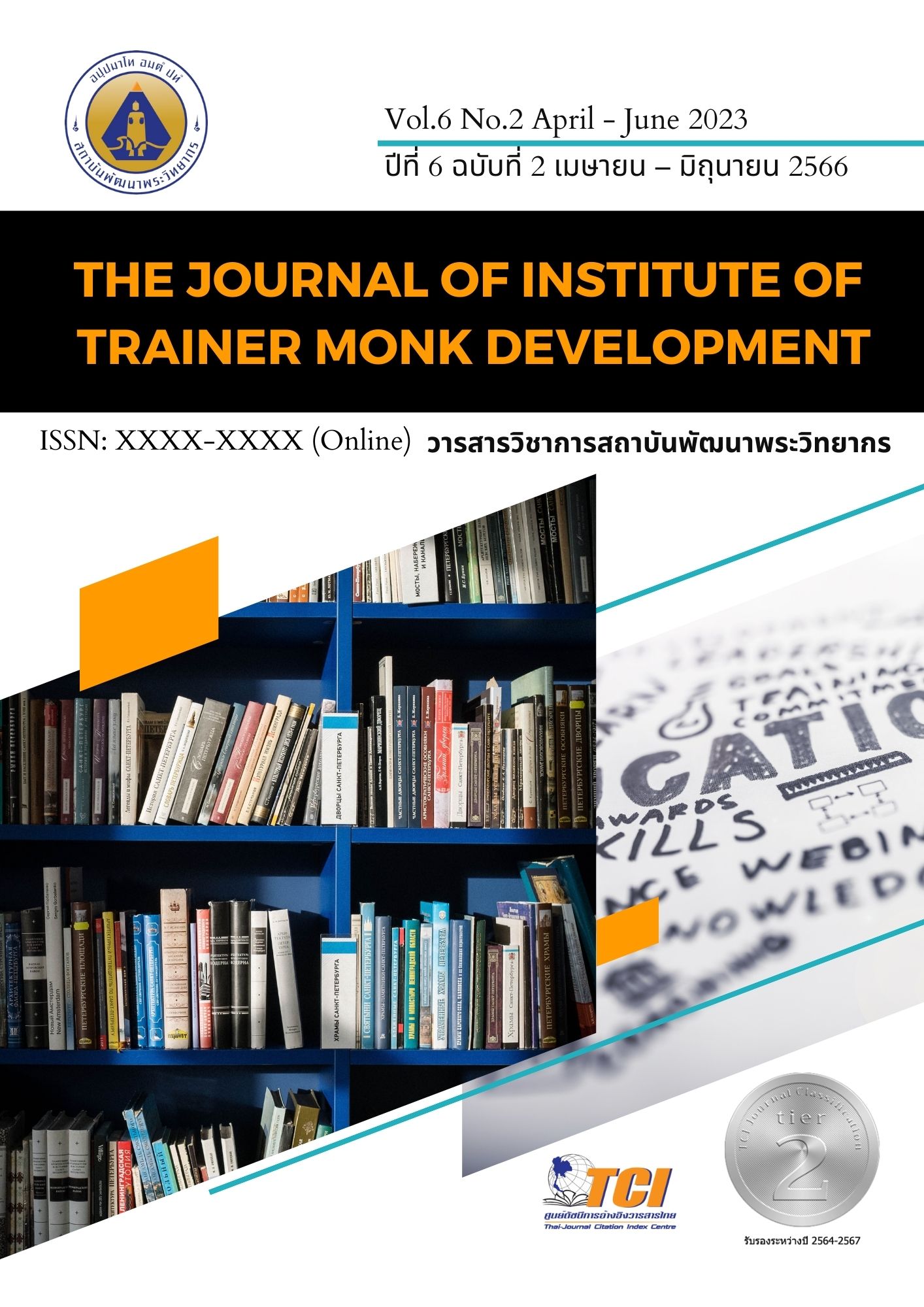The Status and Roles of Bhikkhuni in Theravada Buddhism the Thai Sangkha
Main Article Content
Abstract
The study entitled “The Status and Roles of Bhikkhuni in Theravada Buddhism of the Thai Sangha” consisted of the following objectives: 1) to investigate the background of Theravada Bhikkhuni in Buddhism; 2) to analyze the attitudes toward the existence of Theravada Bhikkhuni; and 3) to explore the attitudes of Thai Sangha toward the existence of Theravada Bhikkhuni. The obtained data were synthesized and interpreted by integrating egal principles related to Thai Theravada Bhikkhuni. The Thai Tipitaka was used as the primary source for the study, and documents, academic papers, books, textbooks, and related research works served as secondary sources for the data collection. A combination of descriptive and inductive methods was used to analyze the data. From the study, the following results are found: 1) The background of Theravada Bhikkhuni in Buddhism is found as follows: women were excluded and rejected from getting ordained in the religion in ancient Jambudvipa society due to traditional values, but the Buddha allowed women of all castes to ordain in Buddhism without any limitations. This gave rise to the first Bhikkhuni, Mahāpajāpatī Gotamī Therī. 2) From analyzing the attitudes toward the existence of Theravada Bhikkhuni, it is found that Theravada Bhikkhunis have disappeared from Jambudvipa and Lanka, and without any evidence of any Bhikkhuni in Thailand. There have been attempts in Theravada Buddhist countries, particularly Thailand, which is recognized internationally as the of Buddhism today, to revive Bhikkhuni. However, the movement is a minority, and the general public does not see the need for Bhikkhuni because it has never existed in the past. 3) The attitudes of the Thai Sangha toward the existence of Theravada Bhikkhuni found that the Thai Sangha rejects the revival of Bhikkhuni by prohibiting women from being ordained by foreign Theravada monks. Although there have been calls for rights in getting ordained as Bhikkhuni by adhering to the Vinaya (discipline) and international laws, nothing has come into effect.
Article Details

This work is licensed under a Creative Commons Attribution-NonCommercial-NoDerivatives 4.0 International License.
บทความที่ได้รับการตีพิมพ์เป็นลิขสิทธิ์ของวารสารวิชาการสถาบันพัฒนาพระวิทยากร
ข้อความที่ปรากฎอยู่ในบทความที่ได้รับการตีพิมพ์ในวารสาร ถือเป็นความรับผิดชอบของผู้เขียนบทความ และข้อคิดเห็นนั้นไม่ถือว่าเป็นทัศนะและความรับผิดชอบของกองบรรณาธิการวารสารวิชาการสถาบันพัฒนาพระวิทยากร
References
ฉัตรสุมาลย์ กบิลสิงห์. (2539). การพัฒนาสตรีในพระพุทธศาสนา. กรุงเทพมหานคร: เรือนแก้วการพิมพ์.
พระพรหมคุณาภรณ์ (ป.อ.ปยุตฺโต). (2554). ตอบ ดร.มาร์ติน พุทธวินัย ถึง ภิกษุณี. พิมพ์ครั้งที่ 3. กรุงเทพมหานคร: สหมิตรพริ้นติ้งแอนด์พลับลิชิ่ง.
พลเผ่า เพ็งวิภาศ. (2561). การวิเคราะห์บทบาทของภิกษุณีในพระพุทธศาสนา. วิทยานิพนธ์พุทธศาสตรดุษฎีบัณฑิต สาขาวิชาพระพุทธศาสนา. บัณฑิตวิทยาลัย: มหาวิทยาลัยมหาจุฬาลงกรณราชวิทยาลัย.
พุทธทาสภิกขุ. (2521). พระพุทธประวัติจากพระโอษฐ์. พิมพครั้งที่ 9. กรุงเทพมหานคร: ธรรมทานมูลนิธิ.
กาญจนา สุทธิกุล. (2560). กฎหมายที่ภิกษุณีต้องรู้. นครปฐม: วัตรทรงธรรมกัลยาณีภิกษุณีอาราม.
อภิญญา ฉัตรช่อฟ้า. (2562). “การสื่อสารทางการเมืองเพื่อสถานะภิกษุณีในประเทศไทย: ศึกษากรณีธัมมนันทา”. วิทยานิพนธ์ปรัชญาดุษฎีบัณฑิต สาขาวิชาสื่อสารการเมือง. บัณฑิตวิทยาลัย: มหาวิทยาลัยเกริก.


